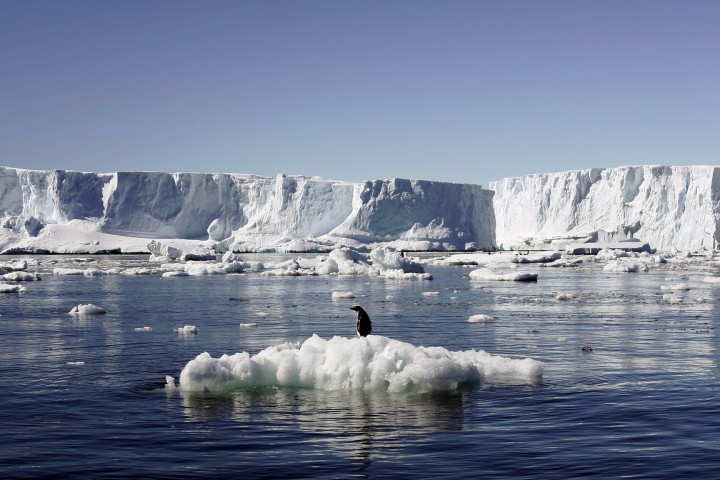Low Record of Antarctic Sea Ice Levels

Sea ice levels in Antarctica dropped to a record low this year, but experts say there is not a clear link to climate change.
More than 60 meteorologists and scientists from around the world are holding a week-long meeting in Hobart, Tasmania, to better understand sea ice changes on the frozen continent.
Dr Jan Lieser from the Antarctic Climate and Ecosystems Cooperative Research Centre said sea ice levels had experienced a “massive increase” in variability over the past few years.
Sea ice coverage fell to 2.075m sq km in March, the lowest since satellite observations began in 1979. But just three years earlier it hit a record high of more than 20m sq km.
Lieser said increasing ocean surface temperatures melt the ice but may also be helping it refreeze.
“More warmth into the system reduces the sea ice cover but there’s also other mechanisms,” he said. “Increased warmth increases the melt underneath shelves – that increases the fresh water balance of the ocean.
“Fresh water more readily freezes at the surface, which increases the sea ice again.”
Better mapping and predicting these changes to aid polar shipping is the goal of the International Ice Charting Working Group Tasmanian meeting.
Unpredictable sea ice levels are creating headaches for an increasing number of tourist and research boats visiting the Antarctic.
The working group estimates about 50 cruise vessels took almost 35,000 tourists to the Antarctic last year.
In late 2013 Russian ship Akademik Shokalskiy got stuck in thick ice for a fortnight. The Aurora Australis icebreaker was one of several boats to help ferry crew and passengers to safety.
Australian Antarctic Division operations manager Robb Clifton said the amount and location of sea ice played a big role in planning this summer’s trip.
“With less ice this year, we’re certainly thinking about whether or not we’ll be able to operate with vehicles, or whether we need to gear up for more aviation operations,” he said.
The co-chair of the working group and director of the Danish Meteorological Institute, Marianne Thyrring, said more data from the Antarctic needed to be gathered.
“We have to be more on our toes to make people operate safely in these polar areas,” she said. “The seasons are being different and are developing differently each year.”
